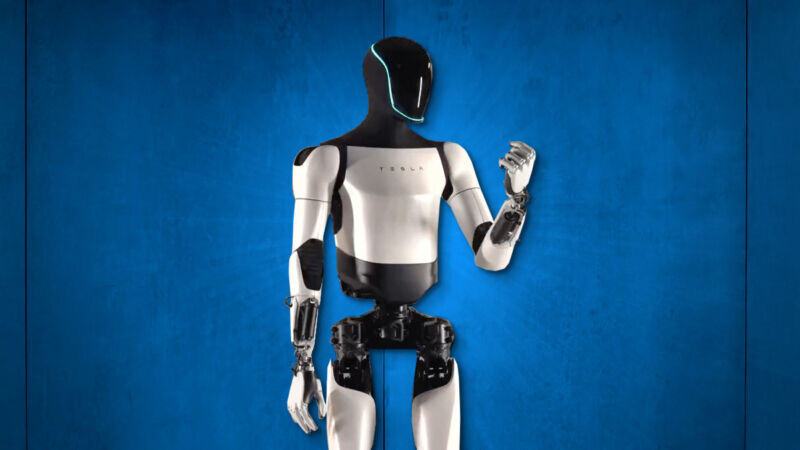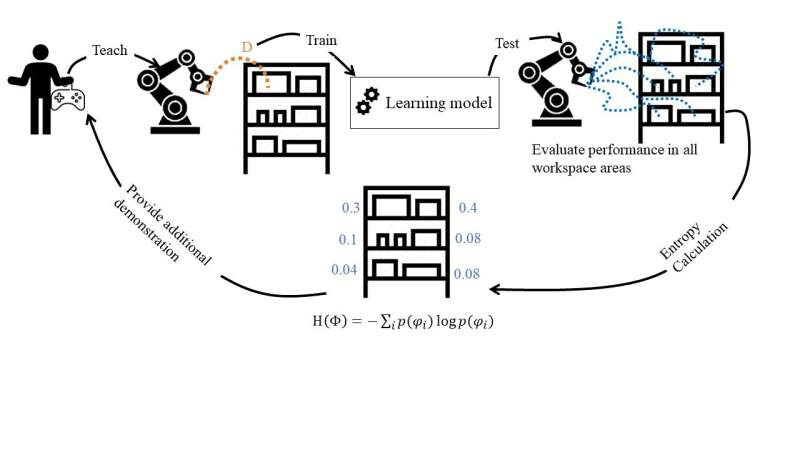
The Robotics Roundup is a weekly newspost going over some of the most exciting developments in robotics over the past week.
In today’s edition we have:
- Tesla unveils its latest humanoid robot, Optimus Gen 2, in demo video
- Choreographer and Engineer Catie Cuan Shares the Ideas Behind Her Eight-Hour Duet With an Industrial Robot Arm
- Joey Castillo’s “Emotional Support Robot” Packs in a Lot of Personality Per Square Inch
- Gathering more effective human demonstrations to teach robots new skills
- IEEE Spectrum: Video Friday
Tesla unveils its latest humanoid robot, Optimus Gen 2, in demo video
Tesla has revealed a video demonstrating the progress of its prototype humanoid robot, Optimus Gen 2. The development of the robot has significantly advanced over the year, with the robot demonstrating various tasks such as crouching, slow walking, delicate object manipulation, and arm waving. The Gen 2 robot features Tesla-designed actuators and sensors, an actuated neck with 2 degrees of freedom, integrated electronics and harnessing in actuators, a 30% boost in walk speed, foot force/torque sensing, articulated toe sections, human foot geometry, a total weight reduction of 10 kg, improved full-body control and balance, faster hands with 11 degrees of freedom, and tactile sensing on all fingers. Despite Optimus Gen 2 being a non-production prototype, Tesla’s CEO Elon Musk envisions the robot as a potential replacement for human labor. Tesla’s claims and the actual functionality of the robot remain to be independently confirmed in real-world demonstrations.
Choreographer and Engineer Catie Cuan Shares the Ideas Behind Her Eight-Hour Duet With an Industrial Robot Arm
Dr. Catie Cuan, a choreographer, dancer, engineer, and researcher, has collaborated with roboticist and artist Ken Goldberg to create “Breathless: Catie and the Robot”, an eight-hour performance between Cuan and a robot arm. The performance explores labor and autonomy themes. Holding a PhD in mechanical engineering from Stanford in “choreorobotics”, Cuan explores how robots can offer a three-dimensional interface for humans and how their movements relate to humans. She sees choreorobotics as an expanding field as robots enter everyday settings. Cuan’s desire to dance with robots came after witnessing her father’s struggle with technology following a stroke, which prompted her to question the absence of artists in the development of new technologies. She hopes that the performance will inspire people to appreciate the inherent beauty of human movement and its contrast with robotic motion.
Joey Castillo’s “Emotional Support Robot” Packs in a Lot of Personality Per Square Inch
Joey Castillo has showcased a work-in-progress “emotional support robot,” designed to assist in demonstrating robotics concepts in upcoming lectures. Powered by an ESP32-S3 Feather and a servo motor FeatherWing, the robot can turn side to side and perform head movements using micro servos. Using simple animations on a small display for a “face”, Castillo has created a robot with a surprising amount of personality. Inspired by Jorvon Moss’s talk on giving machines personality, Castillo’s robot executes random motions, blinking, and tilting for a more stochastic vibe. Plans for the robot include installing a thermal camera to sense people nearby, further enhancing its capabilities for use in educational demonstrations.
Gathering more effective human demonstrations to teach robots new skills
Researchers from the University of British Columbia, Carnegie Mellon University, Monash University, and the University of Victoria have developed an approach for training robots using demonstrations provided by non-expert users. The strategy, which enhances the efficiency and effectiveness of Learning from Demonstrations (LfD), guides users to select demonstrations that significantly improve the robot’s learning capabilities. The researchers trained 24 novice users using an augmented reality (AR)-based guidance system based on their criteria, leading to improved robot learning and generalization efficiency. Demonstrations produced by these trained participants improved the robots’ learning efficiency by up to 198% compared to untrained users and by 210% when compared to learning approaches based on trial and error. The team aims to democratize access to robotics across all domains by integrating intuitive and interactive training into the LfD pipeline.
IEEE Spectrum: Video Friday
This week’s Video Friday features a selection of videos include a walking robot called Mugatu that can walk with just a single motor, Boston Dynamics’ holiday greetings, a demo showcasing how large language models can enhance robot capabilities, and more. Additionally, there are highlights of research projects, including the University of Michigan’s robot capable of lifting and stacking small pallets, and a controller for object reorientation using a depth camera.


